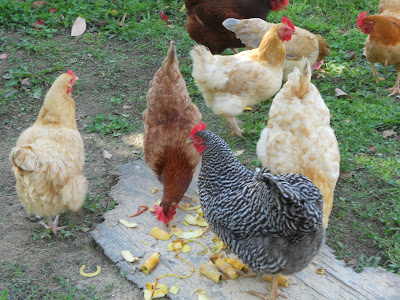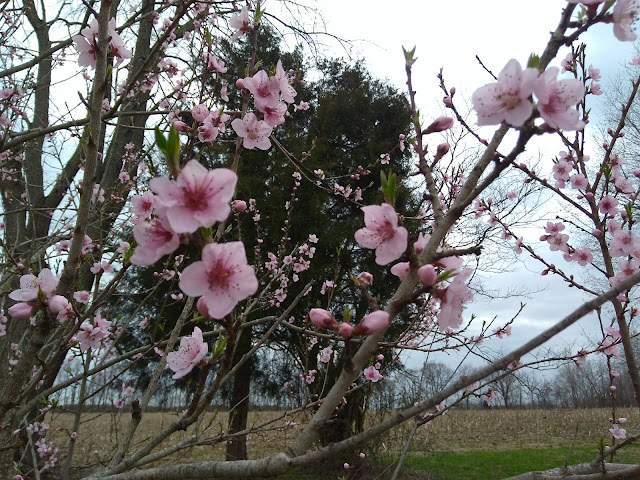Year At Pleasant Hill Farm: Highly Cultured (October)
 |
| The ladies love the apple leavings, but I was determined to find something else to do with them. |
This month we've been highly cultured! Nope - we haven't been to the opera or even a ballet recently. But we have been experimenting with microorganisms in our kitchen, trying to capture just the right bacteria to do the job of the moment. Our kitchen biology projects have primarily been a result of trying to use up products of the season and sale items. (Truth be told - in a galaxy far, far away [South Carolina] and a time long, long ago [the 1980s] I used to grow cultures as part for pay, but those were less exciting tissue and viral cultures.)
Our first enterprise came about as we sought a new use for all those apple peels and cores that come about from making applesauce. Sure, the chickens love the scraps, but what else can be done with them? My kids enjoy apple peel jelly, but we still have plenty from last year. First I tried baking the peels with a bit of cinnamon and sugar, but the results were only middling-fair. So, next we decided to try our hand at making apple cider vinegar. We sure use enough of the stuff, whether it is to cure warts or in culinary pursuits.
Instructions for making vinegar from apple leavings abound on the internet. (Try this or this, for example.)
Basically, you put your scraps into jars, add chlorine free water and maybe some sugar, cover with cheesecloth and let it brew. It will bubble and froth for a week or two, and turn thick and highly aromatic. Every time I opened the cabinet door behind which my jars resided, the alcohol smell exploded. That was a good sign, though. Vinegar making is actually a two-step process. First, the fruit has to ferment and produce alcohol. Check! The good news is that the alcohol content (hopefully) prevents (most) other bad microorganisms from growing in the brew, but it will allow the kind you want. This, though it the tricky step, as you have to capture the correct acetobacteria which will convert the alcohol into vinegar. A "mother of vinegar" should form on the bottom of the jar, and this stuff, which has all sorts of health benefits, can be used as a sort of starter if you are interested in making further batches of vinegar. (And yes, you can purchase the mother which contains mycoderma aceti bacteria, but it will only be in raw, unfiltered vinegar.) The jury is still out on whether we have that going on or not. Something is definitely happening, though, as our jars no longer smell like apple jack, but more like apple juice or maybe (maybe?) apple cider vinegar.
Besides that ongoing experiment, we've been playing with other cultures that we're a bit more experienced with. One of the Aldi groceries that we shop at has been running milk at $.99/gallon, so we've upped our usual yogurt production and have also made some mozzarella string cheese.
To make mozzarella, you don't need much more than a gallon of whole milk, some citric acid powder, rennet, and a good thermometer. (I buy my thermometers at the IU chemistry supply office. They are happy to sell to regular folks.) Rennet is the most difficult supply to locate. I bought some years ago from the Cheese Queen. Each recipe requires only 1/4 tablet, and, kept in the freezer, it lasts for ages.
 |
| Amanda heats a gallon of milk to which we've added citric acid. |
I use this recipe.
 | |||
| After the rennet is added, curds form. Here the curds have been cut so they are now floating in the whey. |
 |
| We made string cheese with this batch. Yield: 18 oz from 1 gallon of $.99 milk. Not bad! |



Comments